The Problem with Modern Diesel Engines
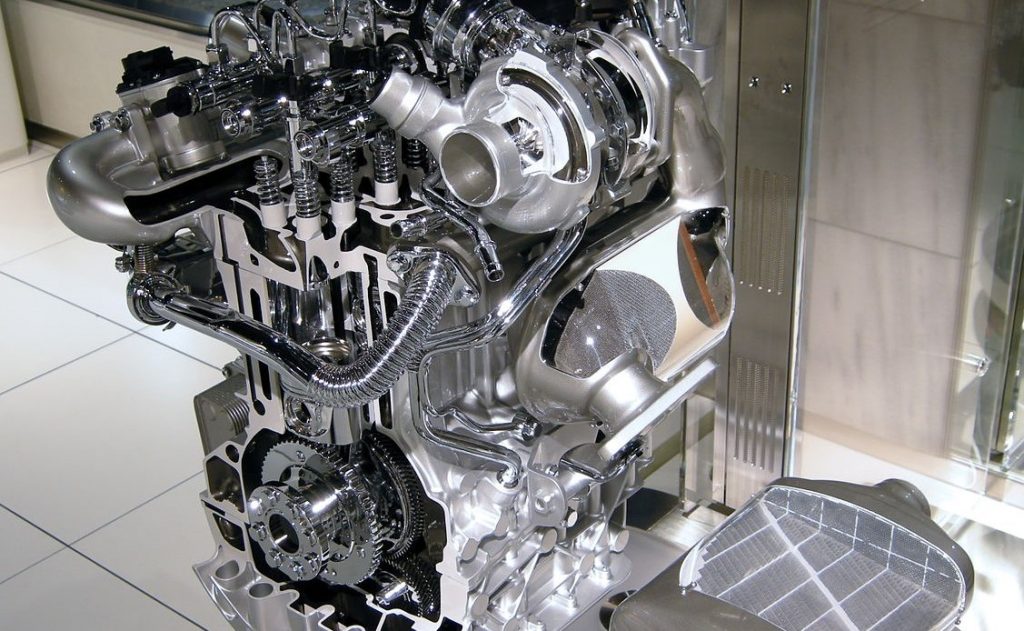
This article will help you decide if a modern diesel car is a right choice for you. It may get technical at times. However, if you bear with me until the end, you will learn:
-
why diesel engines are more efficient than petrol engines
-
why diesel emissions became a problem for manufacturers and drivers
-
what typically fails in diesel engines and how much it costs to fix
-
if driving a diesel car makes sense for you
Diesel engine advantages
Modern diesel engines still operate on the same principle as 40 years ago. Diesel fuel is injected into the engine cylinders, and it is ignited by the high temperature generated through compression.
Diesel engines have higher compression ratios as compared to petrol engines because it is necessary to initiate combustion. The compression ratio indicates how much the gas inside the engine cylinders gets compressed.
For example, a compression ratio of 18:1 means that the volume of gas is reduced 18 times when the engine piston is at the top of its stroke.
The compression ratio is directly linked to engine efficiency. It is one of the reasons why diesel engines are more efficient than petrol engines.
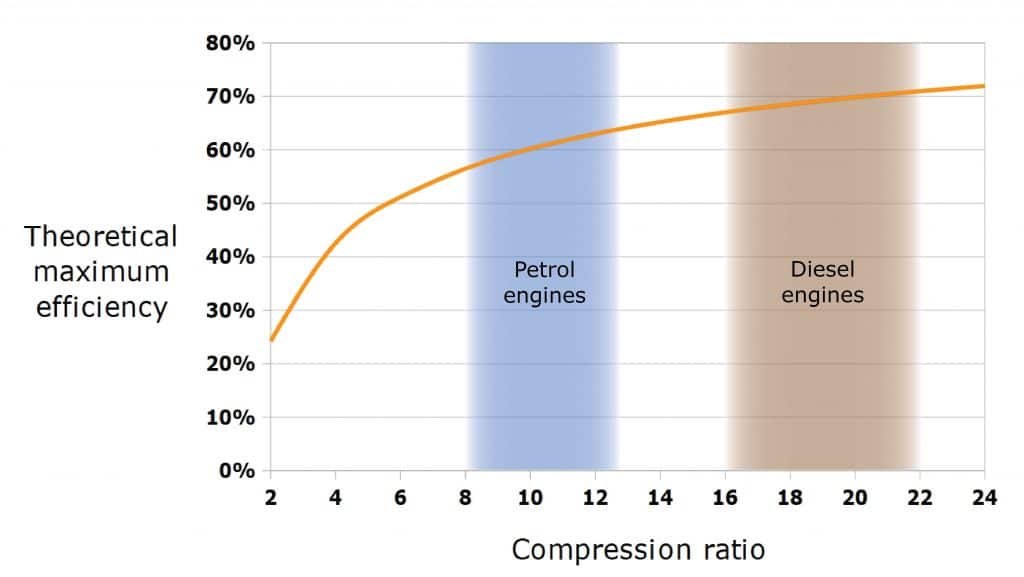
On a final note about compression, forced induction (turbocharging and supercharging) increases the effective compression ratio. Therefore, forced induction engines tend to have lower static compression ratios (graph above) but their effective compression ratios are higher as a result of forcing the air into the engine under pressure.
Pretty much all modern diesel cars are turbocharged, so don’t let a low compression ratio (16:1) deceive you – their effective compression ratio can be pretty high. Also, diesel engines can operate at higher boost pressures than petrol engines because too much boost (or too high compression ratio) makes petrol engines susceptible to destructive knocking (detonation).
Lack of throttling losses
Another reason for better diesel efficiency is the lack of throttling losses. Petrol engines need to maintain a correct air-fuel ratio. Burning fuel inside an engine is a chemical reaction and the ingredients for optimal combustion are 14.7 grams of air and 1 gram of petrol.
The 14.7:1 ratio of air to fuel is the stoichiometric ratio. Petrol engines need to operate close to this value. Adding too much fuel means that the engine is running rich, which is inefficient because there isn’t enough air to completely burn all the fuel.
Too little fuel means that the engine is running lean. The problem with this is that a lean mixture is difficult to ignite, and it may increase combustion temperatures to dangerous levels, high enough to melt engine pistons in severe cases.
Even when the engine is capable of running lean, the emissions of nitrogen oxides (NOx) can go through the roof. Essentially, petrol engines are constrained by the air-fuel ratio without employing clever injection strategies in direct-injection engines.
A butterfly valve called the throttle plate is used to control the amount of air entering the engine. It sits inside the throttle body attached to engine air intake. Here’s what it looks like:
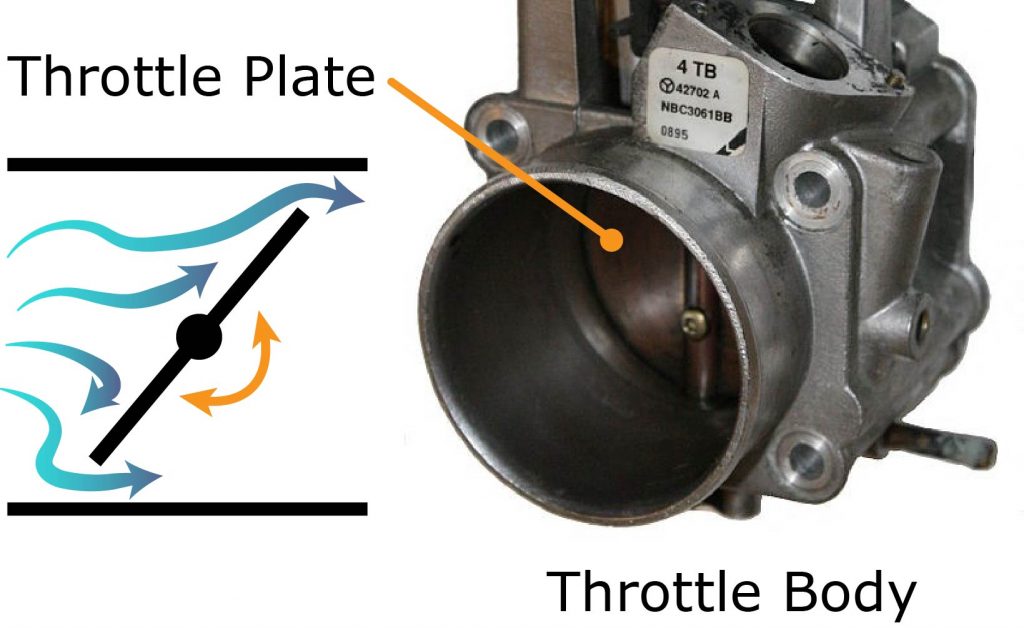
The problem with the throttle plate is that it restricts airflow. At partial loads (partially depressed gas pedal), the throttle plate is only half open to reduce the amount of air entering the engine. This creates a vacuum in the intake manifold because the engine is trying to suck in more air than it is allowed to. Imagine trying to breathe through a straw.
The throttle plate reduces efficiency at partial engine loads and these losses are called throttling losses. There are some people out there who treat the gas pedal as an on-off switch. If you always drive a petrol car with the pedal to the metal, you are doing it right! At least as far as reducing throttling losses is concerned…
As for diesel engines, their advantage is that they don’t need throttle plates to control the air-fuel ratio, hence the pumping losses are reduced. Air-fuel ratios are not that important in diesel cars. They are happy to run on very lean mixtures, which is great for efficiency. Here’s how to control a diesel engine:
more fuel = more power
less fuel = less power
That’s pretty much it. You control the amount of fuel added by the fuel injectors and make sure there is enough air to burn it all. Too much air won’t hurt (to a certain point at which the engine blows up). Air-fuel ratios only become important, when you take engine emissions into account. I will get to this topic a bit later.
Fuel economy
The rest of the improvement in diesel fuel economy mainly comes from the fact that a litre of diesel fuel stores 12% more energy than a litre of petrol. In other words, this alone should give you 12% improved fuel economy in diesel cars because you can burn less fuel to perform the same amount of work.
If you take all of this into account, a modern diesel engine is about 20-25% more fuel efficient as compared to a direct injection petrol engine and closer to 30% more efficient when compared to a port-injected petrol engine. This is when comparing engines that are equivalent in terms of power output.
Longevity
There is one more advantage that diesel engines have that’s still valid today – it’s their longer lifespan. Diesel fuel, also called diesel oil, is a better lubricant than petrol, while petrol is a better solvent. Feeding a solvent into the combustion chamber works against the oil film that prevents pistons and cylinders from wearing.
Additionally, diesel engines are built stronger to withstand higher compression ratios, which also makes them more hard wearing. Because of this, the internal parts of a diesel engine tend to last longer.
In other words, diesel engines can do more miles before needing a rebuild or landing at the scrap yard. Please note that I’m referring to the engine internals. Unfortunately, I can’t say the same about the diesel injection system or the auxiliary parts that reduce emissions.
Some of these components have relatively short lifespans, which is the source of the high maintenance cost of diesel engines. I will explain in a moment.
Diesel engine emissions
The combustion in diesel engines occurs as soon as fuel is injected. Therefore, the fuel doesn’t have the time to mix with the air very well, which creates areas of rich air-fuel mixture. As a result, these areas of high fuel concentration don’t burn cleanly. They are the source of particulate matter (soot) that diesel engines are infamous for.
This is also the reason why manufacturers keep increasing the fuel injection pressures to ridiculous levels in order to make the fuel mix better with the air. Apart from soot, diesel engines emit high levels of nitrogen oxides (NOx) due to the lean-burning nature of diesel combustion.
Pick your poison – particulate matter will give you cancer and nitrogen dioxide is a great asthma trigger. Also, nitrogen oxides are linked to acid rain, while soot is linked to smog. This is why diesel cars are getting banned from entering city centres around the world. The black smoke that you sometimes see behind diesel cars is the particulate matter (soot).
On a positive note, diesel engines are pretty good when it comes to carbon dioxide (CO2) emissions. The amount of CO2 emitted by a combustion engine is linked to its efficiency. Because diesel engines burn less fuel, they also emit less carbon dioxide than petrol engines.
Emission standards
Because of the dirty nature of combustion engines, most countries impose emission limits that the car manufacturers need to meet. These emission standards became so stringent that getting diesel engines to pass has become very difficult and requires many engineering workarounds.
While emissions from petrol engines can be dramatically reduced by catalytic converters, diesel engines require a lot more exhaust after-treatment.
For diesel engines to conform to the Euro 6 emission standards that came into force in 2015, all diesel cars need to be fitted with Diesel Particulate Filters (DPF) and many cars will require Selective Catalytic Reduction (SCR) systems that spray ammonia or urea into an SCR catalytic converter mounted to the exhaust system.
Countries outside of Europe, the United States, Australia, China and Japan follow a similar pattern of regulations with similar limits imposed.
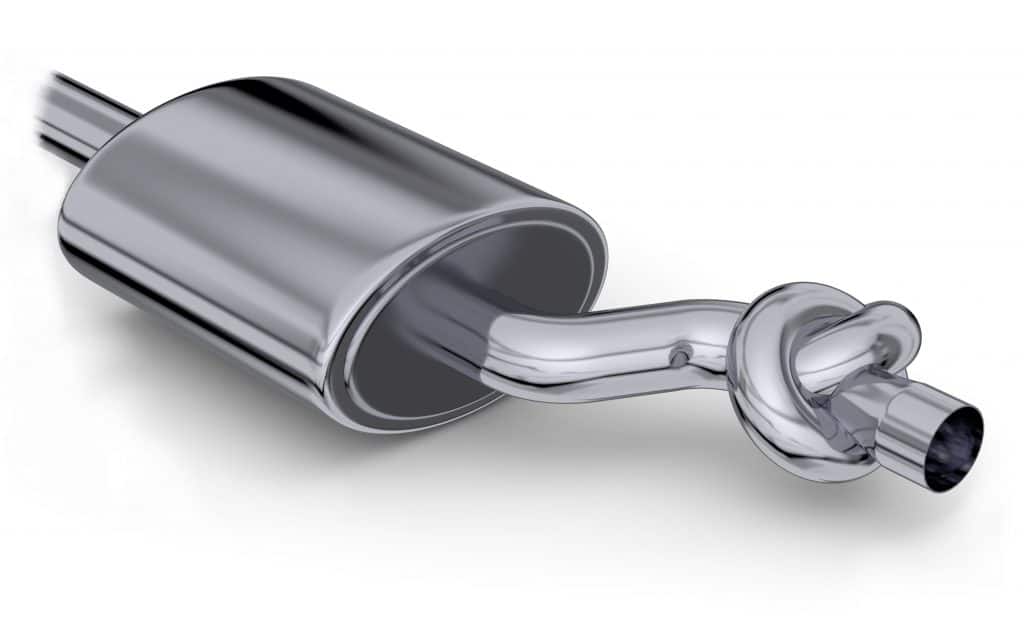
European emission standards are in play since 1993 and they are responsible for a massive reduction in emissions (over 90% for some pollutants), which is a huge success. However, success comes at a price in this case.
The first major change that Euro emission standards introduced was mandating the use of catalytic converters in petrol cars since 1993. As for diesel engines, emission limits started becoming problematic for drivers and manufacturers with the introduction of Euro 4.
-
Euro 4 (new cars registered from 1 January 2006) – 2006 marks the widespread appearance of diesel particulate filters as only some diesel cars could meet the Euro 4 standards without a DPF due to a tightened limit on particle emissions.
-
Euro 5 (new cars registered from 1 January 2011) – the use of diesel particulate filters became mandatory. Also, a tightened NOx emissions limit meant that some cars had to be fitted with NOx traps, which proved to be not as effective as expected (VW emissions scandal). Also, some cars were already fitted with SCR systems, which were used as an alternative to NOx traps.
-
Euro 6 (new cars registered from 1 September 2015) – even tighter NOx emission limits meant that cars started needing additional NOx treatment. Euro 6 marks the widespread appearance of SCR systems. Time will tell how reliable the SCR systems are and how long they will last.
Common problems with diesel engines
Okay, enough about the boring emission standards. It’s time to get to the point of this article.
Car manufacturers have finally managed to make diesel engines nearly as clean, quiet and refined as petrol engines. As is often the case, this comes at a price because engineering design at this level of technological maturity is almost always a compromise. The price to pay is the high maintenance cost of modern diesel cars once they reach a certain mileage.
While the internal parts of a modern diesel engine are still more long-lasting as compared with petrol engines, the injection system and the emissions control equipment is fragile.
Some of these components may need to be serviced multiple times before the engine itself is worn-out. This is the source of the higher maintenance cost of diesel engines, especially high-mileage engines.
Below is a list of things that often fail in diesel cars.
Diesel Particulate Filter (DPF)
Diesel particulate filters are used to reduce the amount of particulate matter (black smoke) emitted by diesel cars, and the main problem with them is that they are unsuitable for city driving.
You can think of the DPF as soot trap. The soot remains trapped in the filter while the exhaust gases get released into the atmosphere. The soot storage capacity is limited. The particulate matter needs to be burned off before the DPF becomes full. Burning off the particulate matter creates extra CO2 and some ash.
Here’s what a DPF looks like inside:
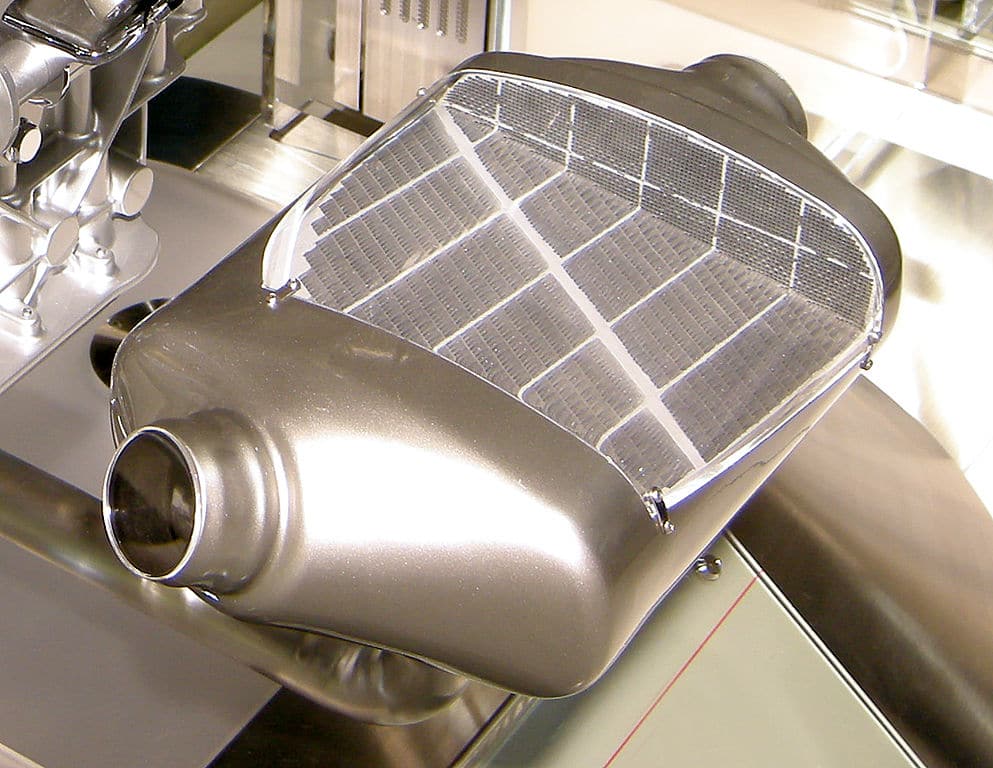
Burning off the soot is called regeneration. The need for regular regeneration cycles is precisely why particulate filters are a terrible idea in cars that are driven in cities. There are three types of DPF regeneration cycles:
Passive regeneration
This type of regeneration happens when the exhaust temperature is high enough, i.e. during motorway driving. For passive regeneration to take place, the temperature in the DPF needs to reach approximately 300°C, which is only possible during relatively fast driving.
Passive regeneration is a slow oxidation process and it may not be enough to fully clear the soot, and not all cars are capable of passively regenerating anyway.
There are very few people that use their cars only on the motorway. Short trips or start-stop driving does not allow the exhaust temperature to get high enough to initiate passive regeneration. Therefore, car manufacturers implemented a solution to force the exhaust temperature to rise to around 600ºC and clear out the DPF. It is called active regeneration.
Active regeneration
When the car detects that the diesel particle filter is becoming clogged (around 50% full) it will try to initiate an active regeneration cycle. Active regeneration is typically required every 300-700 miles in typical driving (urban + motorway). Increasing the exhaust temperature is done by injecting extra fuel into the exhaust, where it burns.
In a way, actively regenerating the DPF is like bombing for peace (or f***ing for virginity). Cars fitted with diesel particulate filters burn more fuel than cars without. The total pollution is higher.
Nevertheless, particulate filters are actually quite effective, and cars with DPFs emit even 90% less particulate matter. The extra CO2 emitted by cars with particulate filters is the lesser evil when compared to the particulate matter that gets burned away.
Active regeneration usually takes 5-15 minutes of continuous driving, ideally at a constant speed. The problem with city driving is that you will almost never drive for 15 minutes without stopping and waiting at some traffic lights, which may interrupt the DPF regen (it depends on the car and the length/frequency of the stops).
In fact, the car is unlikely to even enter the regeneration cycle during urban stop-and-go driving. Also, turning the engine off during a regeneration cycle is a bad thing. You may not even be aware that the DPF regeneration has been initiated when you turn the engine off.
Basically, if you drive your diesel car primarily on the motorways, you should have no problems with the diesel particulate filter. However, if you drive a car with a DPF mostly in the city, well, you bought the wrong car.
Forced regeneration
If the active regeneration cycle gets interrupted too many times or it never has a chance to even start, the DPF will continue to accumulate particulate matter.
At some point, it will be so clogged that it will put the car into “Limp Home” mode and illuminate the “Check Engine” light. At this point, the car needs to be taken to a specialist to perform a forced regeneration (also called service regeneration).
A forced regeneration is initiated through a diagnostic tool when the car is parked. The idle RPM rises and the engine dumps fuel into the exhaust to burn off the soot – all in the name of ecology!
Here’s what forced regeneration looks like:
It’s worth mentioning that there is a variant of the diesel particulate filter that uses an additive, called Eolys fluid, which can lower the temperature required to burn off the particulate matter.
This variant of the DPF is used by the French PSA Group (car brands: Peugeot, Citroën and Vauxhall/Opel since 2017). It is called “Filtre à Particules” in French or simply FAP.
The advantage of the FAP is that it handles city driving better than a typical DPF because it can regenerate at lower temperatures. Its disadvantage is the need for additive refills every 80,000 miles or so, and the system is even more complex.
DPF Lifespan
The typical lifespan of a diesel particulate filter is somewhere between 150,000 and 200,000 miles when the car is used and maintained correctly. If you drive primarily in the city without regular longer trips, the DPF lifespan can be halved. Buying a diesel car with a DPF for urban driving is a false economy.
The DPF itself is fairly reliable. It’s just that it is sensitive to poor maintenance and abuse. Cars with diesel particulate filters require low ash engine oil and regular regeneration cycles. Also, the engine needs to be in good working order. Problems with the EGR valve, injectors or driving with a faulty thermostat will reduce the DPF lifespan.
Buying a high-mileage diesel car, even when maintained properly, can be a bit of a gamble. However, not knowing the car’s history increases the risk substantially. The DPF may be on its last leg after doing supermarket visits for the last 20,000 miles and running on some cheap engine oil that’s not suitable for diesel particulate filters.
When the time to replace the DPF comes, it will typically cost between £500 and £1500. Although, I’m sure you could double this figure if you take a premium class car to the dealership for a DPF replacement. Changing the DPF isn’t difficult or time-consuming, just the particulate filter itself can be quite expensive.
Removing the DPF permanently is possible (it’s called a DPF delete). However, it is also illegal in the UK and probably in most other countries. If the DPF is removed, the car’s ECU needs to be reprogrammed to stop dumping fuel into the exhaust system.
EGR Valve
All modern petrol and diesel cars are fitted with an Exhaust Gas Recirculation (EGR) system. The key part of the system is the EGR valve. Its function is to feed the exhaust gases back into the engine to reduce emissions of nitrogen oxides. This happens only during low and medium engine loads. At full throttle, the EGR valve closes and no exhaust fumes are returned to the engine.
The EGR system in petrol cars is usually reliable because the exhaust gases contain a fraction of the particulate matter as compared to diesel engines. Also, the amount of exhaust fumes that gets recirculated is a lot smaller.
Apart from reducing emissions in petrol cars, the EGR reduces throttling losses, which improves efficiency. It also makes the engine reach operating temperature quicker (hot exhaust fumes returning to the engine). The EGR in petrol cars is a good thing.
It’s a different story in diesel cars. You don’t get the benefit of reducing throttling losses, and the EGR valve leads a much more difficult and shorter life. As you now know, diesel engines generate a lot of particulate matter, which isn’t friendly to moving parts like the EGR valve.

This isn’t even a bad one.
A common problem in diesel engines is the EGR valve getting stuck because of carbon deposits. You would be surprised how much sludge and carbon gets deposited in the air intake manifold due to EGR action.
At 100,000 miles the EGR valve is likely to be full of carbon and ripe for replacement. If there is reasonable access to the EGR valve in your car, I recommend taking it out and cleaning out the soot every 50,000 miles. This should prolong the EGR valve life expectancy noticeably.
Keep in mind that 100,000 miles is a very rough estimate. In some cars, the EGR valves are a recurring problem due to poor design and may need replacing every 50,000 miles. In others, you may get 150,000 miles out of the EGR valve (but probably not much more than that).
Replacing the EGR valve costs somewhere between £300 and £600 at an independent repair shop. The price depends on the location of the valve – some are quite difficult to get to.
Just like with the DPF, short journeys mean more carbon build-up and shorter EGR valve lifespan. The EGR system recirculates exhaust fumes during idle, low loads and low RPM. When you step on the gas, the EGR valve should close, as long as it’s not stuck.
An EGR valve that doesn’t fully close will reduce power and increase fuel consumption. To add insult to injury, a problem with the EGR may cause issues with the diesel particulate filter.
Swirl Flaps
Swirl flaps live in the air intake manifold. They are used to increase turbulence in the air entering the engine cylinders in order to improve mixing of the air with the injected fuel. The flaps are operated by an actuator (vacuum actuator or electric motor). They close at idle and low engine speeds to create a swirl in the air going into the cylinders.
At high engine speeds and high loads, the swirl flaps open to increase the airflow. The whole point of swirl flaps is to reduce emissions. They may also slightly improve engine torque at low revs. High RPM torque and power output are not affected unless the swirl flaps don’t work properly or carbon build-up becomes severe. In these cases, they become a restriction.

Swirl flaps are mechanical parts. I’m sure you can already guess what happens to moving parts that are subjected to diesel exhaust fumes. Swirl flap failure is a common problem in diesel engines and the main cause is the EGR valve.
The flaps fail because of increased friction in the mechanism caused by carbon build-up. Carbon build-up is a side-effect of feeding exhaust gases back into the engine (EGR valve). Swirl flaps are also used in petrol cars. However, when they are designed well, they aren’t as problematic.
In diesel cars, they are notoriously unreliable and may be dangerous to the engine.
Swirl flap failure
The swirl flaps can fail in a few ways:
-
They may develop air leaks around the shaft that holds them (some designs only). The result is a loss of boost pressure and reduced engine performance, eventually followed by the “Check Engine” light.
-
The mechanism that adjusts the swirl flaps may fail. Depending on the manufacturer, you may see broken levers, fried servomotors or leaking vacuum actuators.
-
A swirl flap may become detached and get ingested by the engine. This is the worst-case scenario. An ingested flap can damage valves, cylinder walls, the piston, the fuel injector, and even the turbocharger. Unfortunately, some engines are known for swallowing swirl flaps. The extent of damage depends on plain luck and whether the swirl flap is made of metal or plastic.
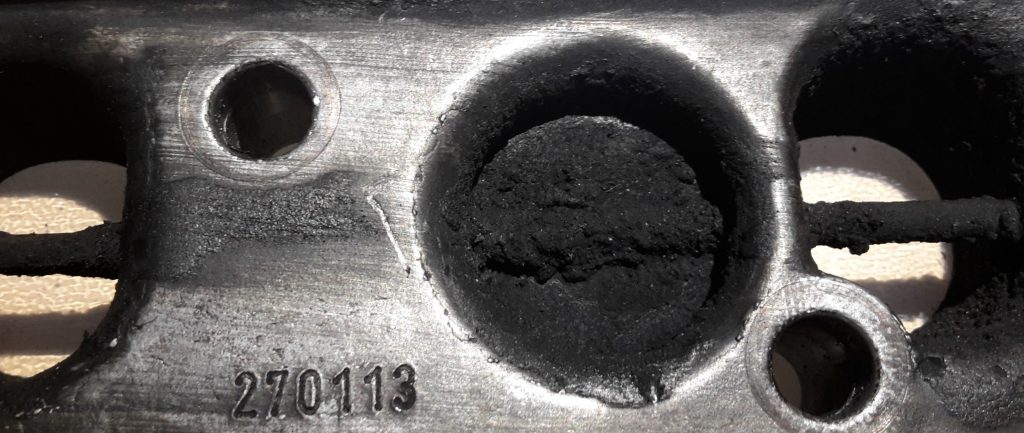
Essentially, the EGR and swirl flaps are two systems that don’t work well together. Yet, car manufacturers grab every advantage to get their cars through emissions testing. In this case, it’s at the cost of reliability (and some wrecked engines). In my opinion, swirl flaps should not be used in diesel engines.
I’m dead serious about swirl flaps being dangerous to the engine. I recommend doing some research before buying a modern diesel car because there are cars out there with some really poor swirl flap designs. Have a look in the car directory on this site. You may find some information about dodgy swirl flaps in particular car models.
If the car model you are looking to buy is fitted with “high risk” swirl flaps, you should take some precautions, like replacing the intake manifold with a new one. A brand new manifold should be safe for quite a while.
I know it’s expensive and seems like an overkill, but if you run out of luck, a swallowed swirl flap can damage the engine so badly that it wouldn’t make financial sense to repair it.
An alternative option is to remove the swirl flaps altogether. Swirl flap removal kits are inexpensive and widely available. Keep in mind that this option is illegal because it increases emissions. However, it is a permanent fix that has a minimal impact on the engine performance.
Dual-mass Flywheel (DMF)
A dual-mass flywheel failure is definitely one of my favourite first-world problems. The dual-mass flywheel is a torsional damper fitted between the engine and the clutch. Its job is to smooth out the jerky nature of the engine’s power delivery.
When engine cylinders fire, there is a surge of rapid crankshaft acceleration, then a pause, then another surge from the next cylinder firing and so on. In other words, the engine delivers power in pulses, rather than constantly. The purpose of the dual-mass flywheel is to reduce noise and vibrations in the cabin. It also protects the drivetrain from torsional vibrations.
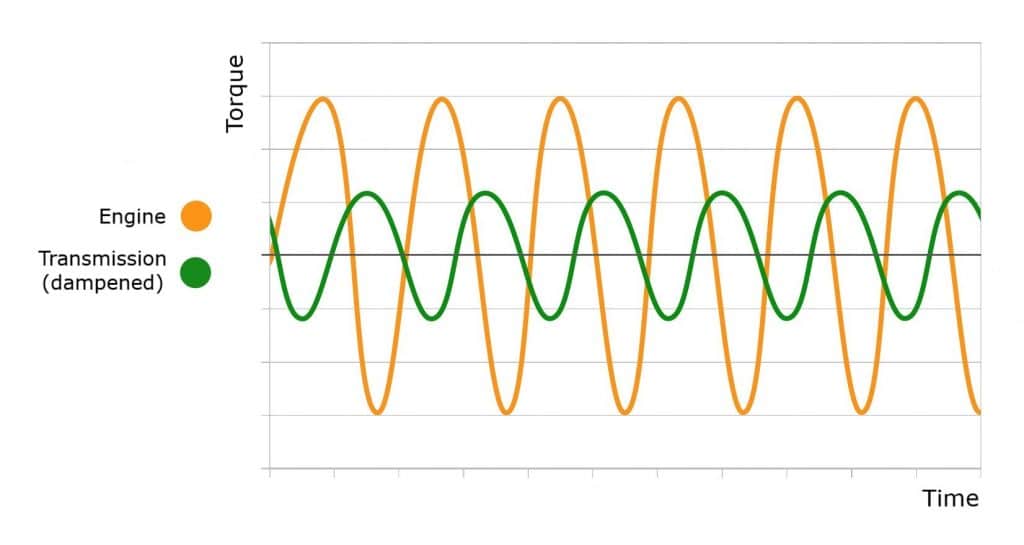
If the torsional vibrations are not dampened, they can manifest as transmission gear rattle at standstill or vibrations/noise when driving at low engine speeds (below 2000 RPM). Dual-mass flywheels make cars smoother and quieter. If this sounds great, wait until you get the bill for replacing the DMF in your car.
Dual-mass flywheel replacement typically costs between £700 and £1200. This includes the cost of a new clutch since it’s worth doing it at the same time to avoid paying for the same work in the future. It’s a labour intensive job because the gearbox needs to be removed from the car.
The price above is what independent car repair shop will charge you. If you take the car to the dealership, you can add 50% or double those figures.
The main problem with dual-mass flywheels is that the improvement in comfort and noise is often so small that it doesn’t justify the cost of the DMF and the reduction in reliability as compared to using a single-mass (solid) flywheel.
A traditional single-mass flywheel is a solid piece of metal that relies on its inertia to smooth out engine’s power delivery. Solid flywheels are inexpensive and don’t really wear out when not abused. A single-mass flywheel should last the lifetime of the vehicle.
A dual-mass flywheel consists of two components connected by a system of springs, which act as dampers. In a diesel car, you can treat the dual-mass flywheel as a consumable item.
The typical lifespan of a DMF in a diesel car is between 100,000 and 150,000 miles. Although, I reckon that you could finish the OEM dual-mass flywheel off in 50,000 miles in some cars with 100% urban driving at low engine revs.
Dual-mass flywheels fail much quicker in diesel cars as compared to petrol cars because they get pummeled by the higher level of torsional vibrations.
Driving at low engine speeds (1000-1500 RPM) shortens the lifespan of the dual-mass flywheel. I find it funny that the DMF makes it possible to drive at such low revs comfortably, but it’s exactly what makes it wear out quicker.
Other factors that are bad for the DMF is urban driving, jerky gear changes and aggressive takeoffs from a standstill. The dual-mass flywheel is yet another reason to avoid buying a diesel car for driving in the city.
Solid flywheel conversion
In some cars, it is possible to convert from a dual-mass flywheel to a solid flywheel. It’s cheaper and some people choose to do so to avoid recurring problems (popular decision among fleet owners). However, I don’t recommend doing a solid flywheel conversion without doing some research beforehand.
The extra vibrations may damage the transmission in some cars because the gearbox may not have been designed to work with a solid flywheel to begin with. On the other hand, some cars run perfectly fine with solid flywheels with a minimal difference in the level of noise and vibrations.
Please note that solid flywheels also dampen torsional vibrations. It’s just that dual-mass flywheels do it better. The springs in the clutch plate (see picture below) act as dampers in cars with single mass flywheels. Cars with dual-mass flywheels may or may not have these springs. The ones that don’t have springs, rely solely on the DMF for damping.
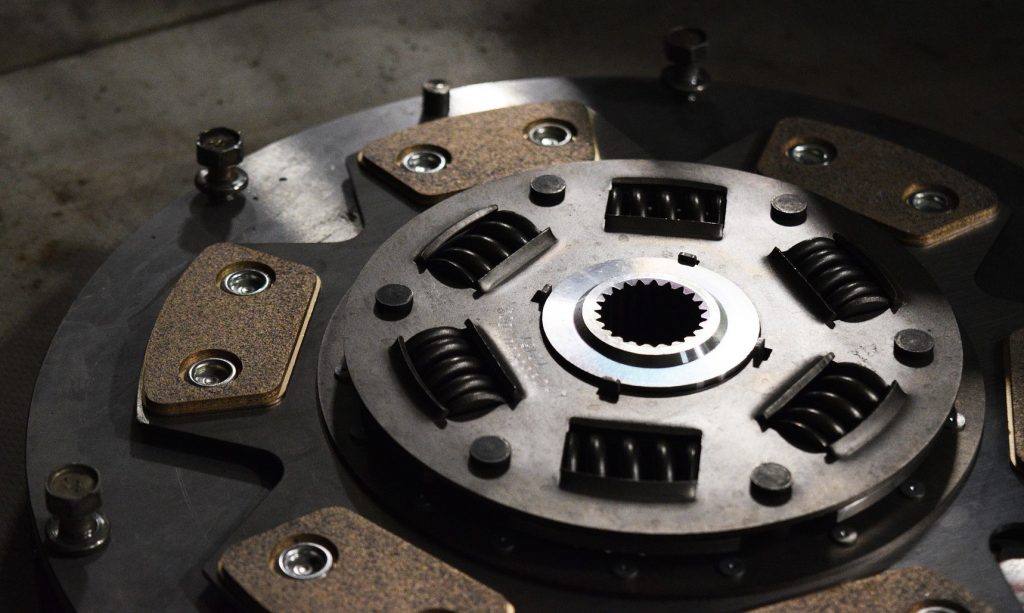
Diesel fuel injectors (Common Rail)
Improvements in fuel injection technology are what made modern diesel cars less diesely (for a lack of a better word). The injection technology used today is called Common Rail from the “common” high-pressure fuel rail that feeds the injectors.
The diesel fuel injectors are the key parts that define the performance of a diesel engine as they directly affect the combustion efficiency and emissions. As the name implies, their role is to inject diesel fuel into the engine cylinders at high pressures. When I say high, I mean ludicrously high when it comes to the latest Common Rail diesel engines.

Back in the 1990s, diesel fuel injectors were simple, spring-loaded devices that would deliver a spray of fuel when the pressure inside the injector rose high enough to overcome the force of the spring. The injection pressure in the old-school diesel engines with indirect injection was lower than 150 bar (150 times the atmospheric pressure). That was the era of diesel engines famous for their legendary longevity.
Soon after, direct injection technology was developed. The improvement in fuel economy, power and refinement made direct injection turbo-diesel cars more popular. From that moment on, car manufacturers have been increasing injection pressures and reducing the diameters of the orifices in the fuel injector tips.
Modern, Common Rail injectors can deliver fuel at 2500 bar, which is 20 times more than what was typical for diesel cars of the 1990s. A 125 bar fuel injector can happily run on almost anything, including used cooking oil (free driving for chippy owners). A 2500 bar fuel injector will throw a hissing fit very quickly when fed anything else than good quality, perfectly clean diesel fuel.
By squeezing fuel at higher pressures through a smaller hole (orifice), the fuel spray coming out from the injector consists of smaller droplets (better fuel atomization).
Well atomized fuel mixes better with the air. Also, many small droplets have a larger combined surface area than fewer large droplets (more efficient burn). This leads to a more complete combustion, more power, better efficiency and less smoke.
The other major improvement in diesel injector technology is the ability of piezoelectric and solenoid injectors to deliver multiple injections per combustion cycle. The state-of-the-art piezoelectric injectors can deliver up to nine injections in one cycle and dose fuel in milligrams.
The typical diesel knock and emissions are reduced by spreading the injections into stages (pilot injections, main injections, post-injections). Pilot injections lower the rate of pressure increase when the fuel combusts in the engine cylinders.
In other words, the combustion moves closer to “burning” and further away from “exploding”, which makes the engine sound smoother and quieter. That’s why some modern diesel cars are not much louder than petrol cars.
So what’s the catch?
Improvements in injection technology are what made diesel cars what they are today – quiet, powerful and efficient. However, such improvement is bound to come at a cost at this level of technological maturity. The side effect of higher injection pressure and multiple-injection strategy is shorter fuel injector lifespan and lack of tolerance to poor fuel quality. Additionally, the injector cost is exponentially higher.
The higher the injection pressure, the higher the abrasive action of fuel being forced through 0.1 mm holes (orifices). Have you heard of waterjet cutting? It is a technique of cutting through stuff, including metal and stone. It uses water at high pressure mixed with abrasive particles. Do you notice any similarities?
Also, diesel fuel injectors have a finite design life. Let’s say that the fuel injector can only fire 1000000000 times (I made this number up). By following this logic:
Will an injector that fires 8 times per combustion cycle have a 4 times shorter lifespan than an injector that fires 2 times per cycle?
Food for thought – let me know what you think in the comments section!
I’m not trying to scare you though. Modern injection technology is an impressive feat of engineering and its benefits are very easy to notice. Nevertheless, diesel fuel injectors are precision devices, and they are not nearly as simple as they used to be.
New fuel injectors typically cost between £200 and £300 per piece. You may need a new set somewhere between 150,000 and 200,000 miles.
There is also the option of injector reconditioning for about half the price of a new set. However, keep in mind that not all modern piezoelectric injectors can be reconditioned. Also, reconditioned fuel injectors won’t last as long as new ones.
Buying a used diesel car
Modern diesel cars are great when they are new. However, problems often start when the car approaches the 150,000 miles mark. For the sake of example, let’s say that you bought one with 150,000 miles on the clock, and you are planning to keep it for three or four years.
The car still has the original dual-mass flywheel, injectors and even the EGR valve managed to survive this long. The original diesel particulate filter is there too, but if you’re not interested in cars, you probably didn’t even know about it (you will after reading this article!).
Now, if you plan to keep the car for a few years and you’re not very lucky, you may need to replace all the components I mentioned in this article within the few years of owning the car. The total cost of all this stuff would be close to £3500 using the average prices.
It still does not include any swirl flap maintenance. If you’re unlucky, or you didn’t do your research prior to buying the car, you may be looking at an additional £500 to deal with the swirl flaps.
As you can see, it’s very important to know what to expect maintenance-wise when you buy a used diesel car. High mileage diesel cars are nearly as expensive to maintain as the Space Shuttle. Joking aside, if you buy a modern diesel car in poor condition or you’re simply unlucky, you may have to pay through the nose to keep the car going.
This is why second-hand, modern diesel cars only make sense for people who drive a lot. My back-of-a-cigarette-packet calculations tell me that you should be doing at least 12,000 miles every year for the fuel savings to offset the potential cost of maintenance.
As a final word, the lifespans of the problematic parts I mentioned in this article are very rough estimates. They are not set in stone. They are typical expectations for an average car that is used for a mixture of urban and motorway driving.
If you look after your diesel car well, and 80% of your driving is on the motorway, there’s no reason why a DPF or other components should not last 200,000 miles. Urban driving is usually the problem.
Summary
Here’s a quick summary of what you should take away from all this:
-
Modern diesel exhaust system is a sophisticated chemical reactor. It’s no longer just a piece of pipe with a muffler. Exhaust gases get recirculated back to the engine. The catalytic converter turns the hydrocarbons and CO into CO2 and water. The diesel particulate filter traps soot and burns it off when it gets full. Then there is the NOx removal system. Some of the components in these systems are not very reliable. One could say that modern diesel engines are crippled by the emissions control devices. It’s a shame that smog isn’t healthy.
-
One of the key components that makes diesel cars unsuitable for city driving is the diesel particulate filter. If you rarely leave the city for a longer trip, you are likely to dramatically reduce the lifespan of the DPF in your diesel car. With diesel cars getting banned from entering city centres all over the world because of their emissions, I feel that diesel engines don’t make much sense in passenger vehicles unless you drive a lot – enough for the fuel savings to offset the high maintenance cost and then some.
-
The improvements in fuel injection technology and the use of dual-mass flywheels managed to turn a frog into a prince. Today’s diesel cars may be powerful, quiet and very nice to drive, but the complexity has gone through the roof. Along with the complexity, so did the maintenance burden. Progress is vital, but there is a point where the next small bit of extra performance comes at the cost of a larger chunk of reliability. When progress compromises reliability, I think it’s time to stop. I feel that modern diesel cars have gone past this point.
Older was better?
In the past, diesel engines could operate without electricity once started. Everything was purely mechanical and such engines were still used in passenger cars in the 1990s.
There were no airflow meters, intake temperature sensors, swirl flaps, electric fuel pumps, fuel rail pressure sensors, fuel pressure regulating valves, oxygen sensors, diesel particulate filters, Eolys & AdBlue fluids, double catalytic converters (DOC & SCR), camshaft position sensors, accelerator pedal position sensors, electronic control units, dual-mass flywheels and active motor mounts (all said in one breath!).
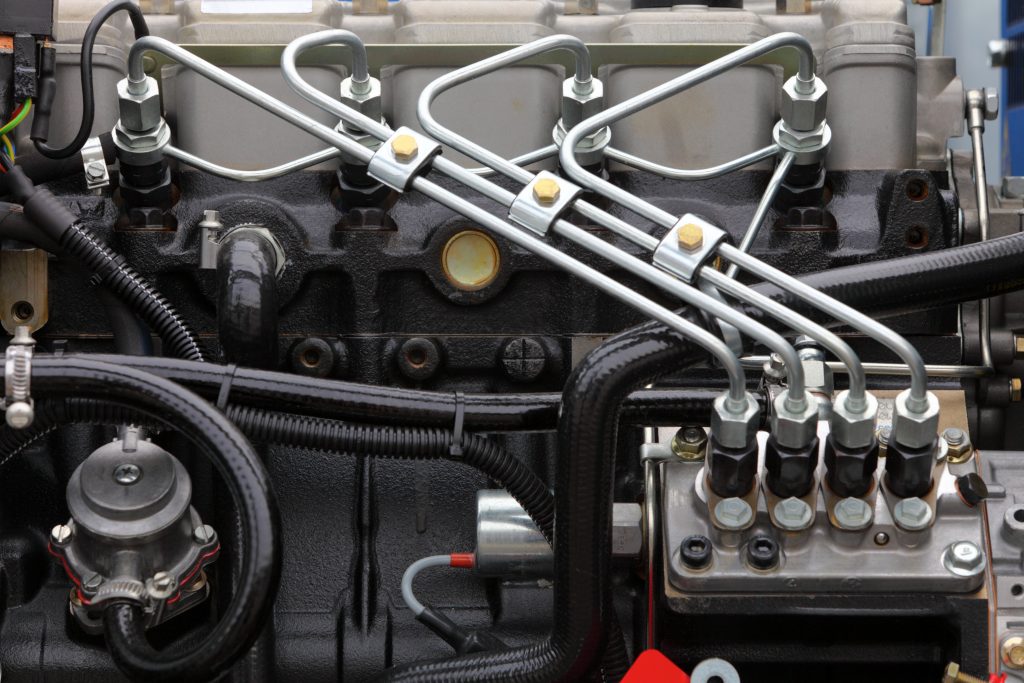
Even without all these things, the last of the indirectly injected diesel engines were already reasonably powerful and well-mannered while still being very reliable. All that was required to get them to run was a mechanical injection pump, spring-loaded fuel injectors and some optional electronic bits. Pilot injections were possible too (by using two springs)!
The first-generation directly injected diesel engines were quite good too, albeit a lot more complex and more expensive to maintain. Then, the emission limits started becoming tighter. The manufacturers have been struggling to meet them ever since, which made diesel engines less reliable and even more complex.
Today, we’ve got fuel injection systems that run at pressures high enough to cut through things. Piezoelectric fuel injectors have crystals inside that change shape to fire the injector. Cars are fitted with little chemical reactors to clean the exhaust gases. Everything is governed by computers more powerful than what was necessary to put people on the moon.
The original simplicity of diesel engines has been lost. Welcome to the space age.
If you liked this article, please share it with your friends!
And here’s more on the topic of progress.

A wonderful, if not worrying insight to the lengths manufacturers have to go to, in order to supposedly reduce emissions.
Thank you for the highly informative article.